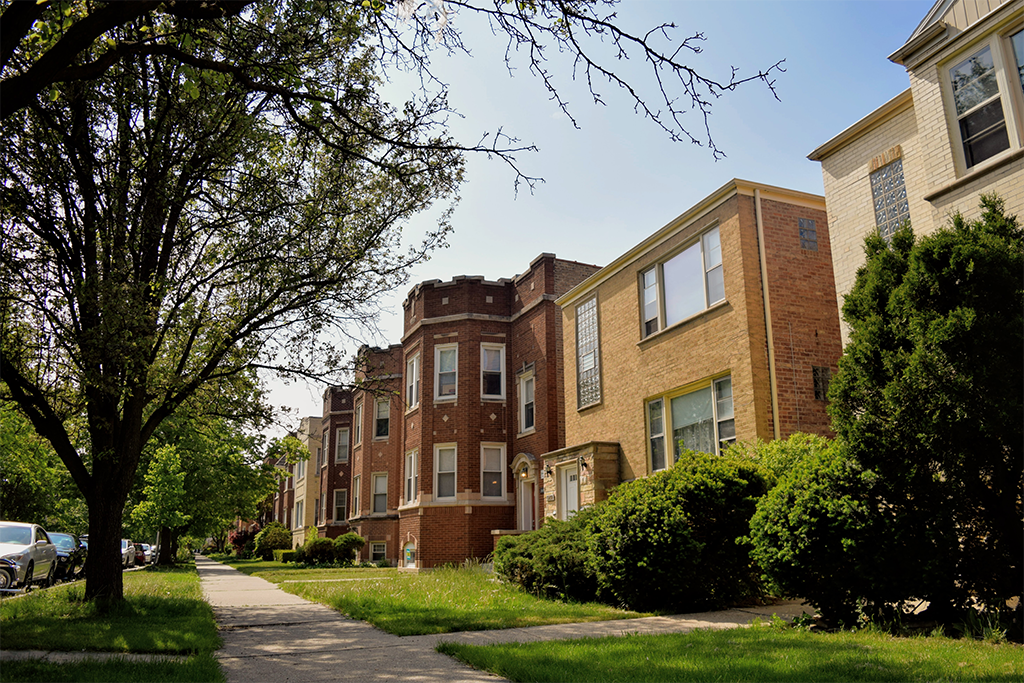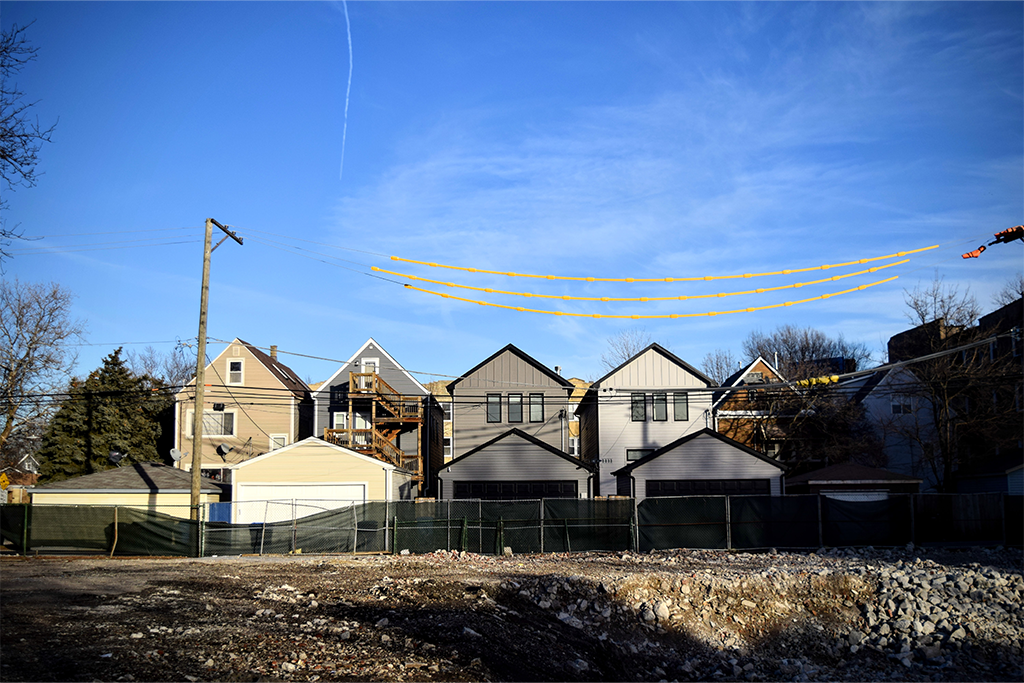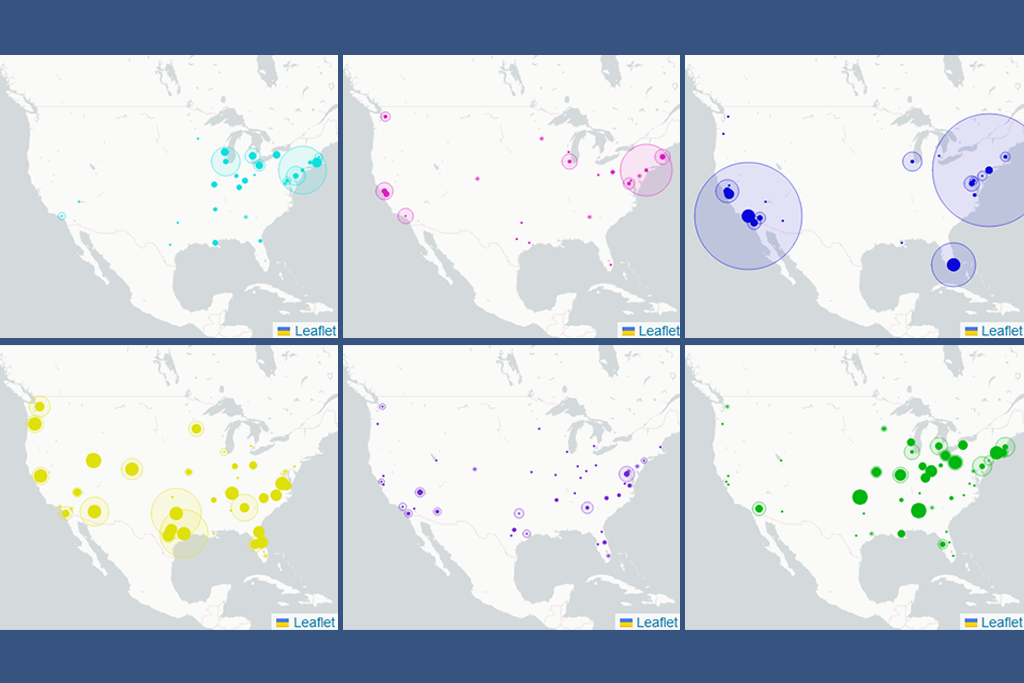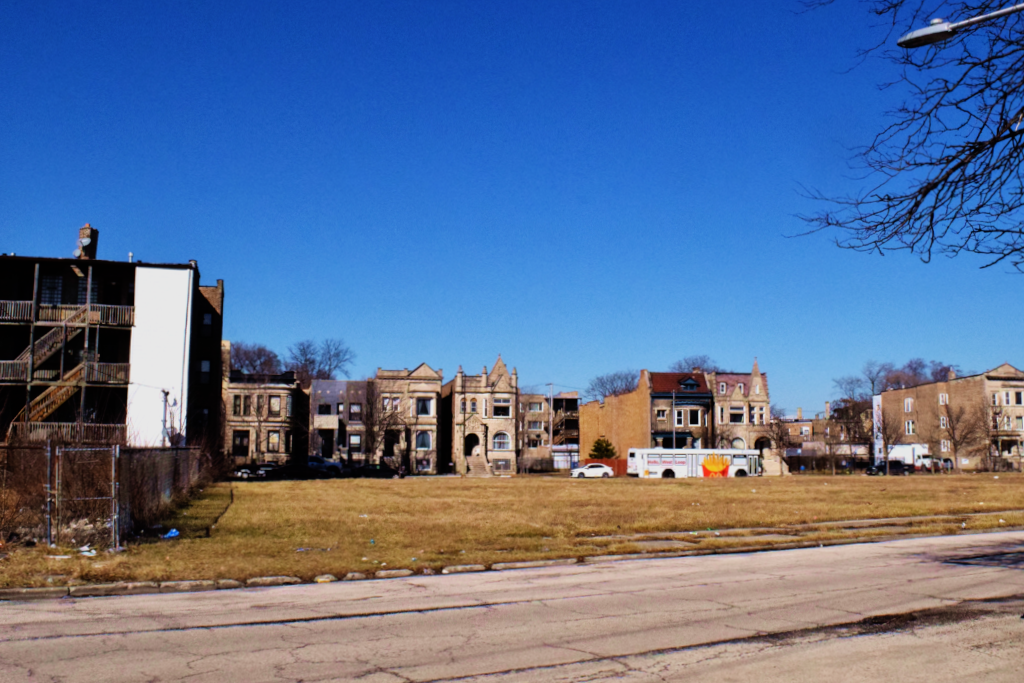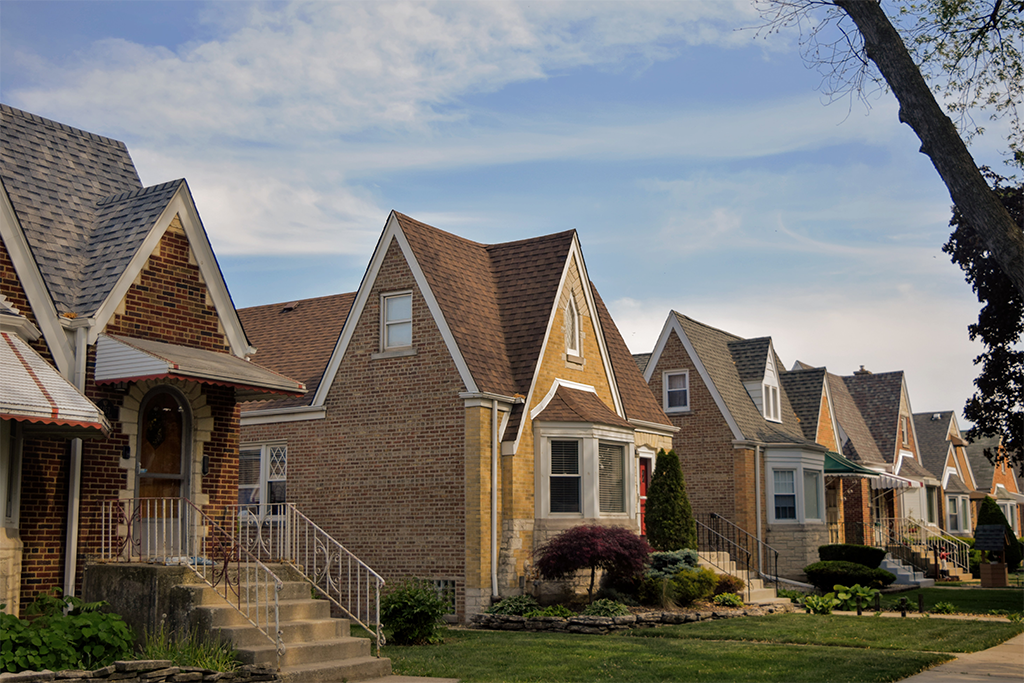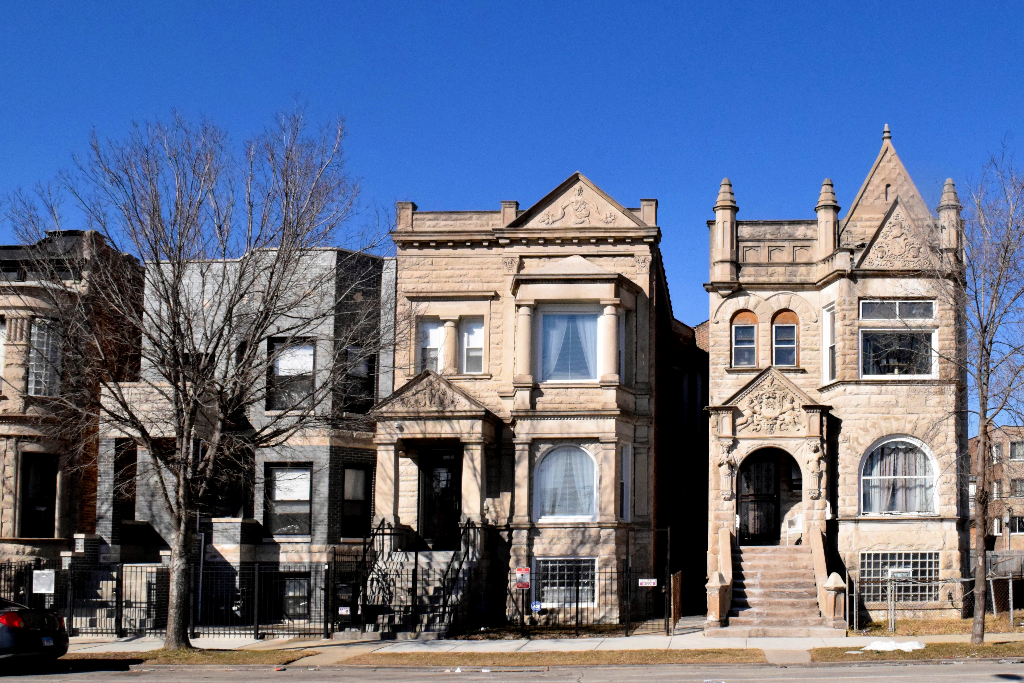Photo: Evelyn Ryan
Recent IHS research has examined the housing market implications of the growing older adult (65+) population in Chicago and suburban Cook County. Building on this research, IHS has also convened regional stakeholders to discuss the implications of an aging population on their communities’ housing needs, most recently focusing on the challenges faced by older adult homeowners considering aging in place in single-family homes and 2 to 4 unit properties.
This research brief discusses some of the key issues that emerged from these discussions and includes new data analysis highlighting the characteristics and spatial patterns of properties owned by older adults in Chicago.
Background
As the number of older adult homeowners increases, the number of homeowners intending to age in place likely grows too. In recent years, the number of owner-occupied households headed by older adults (65+) nationwide has grown faster than other age brackets. Research by AARP has shown that approximately 75 percent of homeowners 50 and older want to stay in their homes as long as possible which may require home safety and accessibility modifications or substantial and costly renovations.
The growing number of older adult homeowners expecting to age in place has significant implications for their individual housing needs as well as for the broader housing market. Nearly 27 percent of older homeowners have lived in their homes for 30 years or more, and approximately 71 percent of older homeowners live in houses that were built before 1990. Older homes often have substantial home maintenance needs, and repair costs disproportionately burden lower-income older adult homeowners, particularly those with fixed incomes and limited home equity. Research has also shown that even older adults with home equity can have difficulty accessing home equity loans to help pay for necessary modifications and improvements. In addition to costs associated with home improvements and modifications, low- and fixed-income senior owners may also struggle with rising housing costs related to property taxes and energy bills.
These national trends are consistent with patterns observed in Chicago and Cook County. IHS data show that the number of older adult-headed households increased by 24.2 percent in Chicago and 15.4 percent in suburban Cook County between 2012 and 2019. By 2019, there were nearly 500,000 older adult-headed households in Cook County with just under 230,000 in the City of Chicago and roughly 263,000 in suburban Cook County. In Chicago, nearly 57 percent of older adults are homeowners, an increase of 12.5 percent from 2012. In suburban Cook County, over 83 percent of older adults are homeowners, an increase of nearly 17 percent from 2012.
Characteristics of Chicago Homes with Senior Exemptions
The age and construction style of homes where seniors live may be useful indicators to assess potential challenges and modification needs for older homeowners. An analysis of parcels with active senior exemptions shows that a significant number of older Chicago homeowners live in properties that may present accessibility concerns. Figure 1 shows that over 26,000 Chicago properties with a senior exemption are single-family, single-story properties built before World War II (constructed before 1945). These types of Chicago homes are likely bungalows or older cottages, which typically have stairs to enter the home and additional stairs leading to potentially finished attic or basement spaces. Another 21,000 Chicago properties with a senior exemption are 2 to 4 unit buildings. These buildings are also typically older and have multiple levels, stairs, and other potential accessibility challenges. Roughly 19,000 Chicago properties with a senior exemption are single-family, multi-story properties which may present challenges for accessing living areas in upper levels. In total, over 67,000 properties with an active senior exemption in Chicago have characteristics that indicate potential challenges associated with aging in place. Post-war single-family, single-story properties and condominium units may also present accessibility concerns, but challenges are more likely associated with the conditions of specific properties than the property type.
Figure 1. Number of Chicago Properties with an Active Senior Exemption by Building Type and Characteristics, Tax Year 2021
The geographic distribution of Chicago’s 1 to 4 unit properties with senior exemptions highlights citywide variation in the housing stock, but also illustrates historic patterns of homeownership by neighborhood race/ethnicity. Figure 2 maps these data across Chicago and shows that these properties are concentrated in Northwest, West, and Southwest community areas such as Portage Park, Belmont Cragin, Austin, Garfield Ridge, Roseland, Auburn Gresham, and West Pullman among others. Many of these areas are modest-income, high-homeownership communities. As illustrated by Figure 3, properties in predominantly Black neighborhoods account for nearly 31 percent of Chicago’s 1 to 4 properties with a senior exemption, the highest share of any neighborhood type. This highlights the legacy of homeownership in many of Chicago’s Black neighborhoods but is also an indicator of potential aging-in-place challenges as these neighborhoods continue to struggle with the long-term impacts of disinvestment and a slow recovery from the Great Recession.
Figure 2. City of Chicago Share of 1 to 4 Unit (Single Family and 2 to 4 Unit properties) Citywide Senior Exemption Properties by Community Area, 2021
Figure 3. Distribution of Chicago's 1 to 4 unit properties with a senior exemption by tract race/ethnicity
Figure 4 shows the 20 City of Chicago Community Areas with the largest number of single-family and 2 to 4 unit properties with senior exemptions. It highlights that in high senior-exempt community areas such as Austin, Belmont Cragin, and South Lawndale among others, a significant portion of senior-exempt homes are 2 to 4 unit properties. Many of these neighborhoods are majority Black or Latino, which is consistent with previous IHS research on the prevalence of 2 to 4 unit buildings in Chicago's Black and Latino neighborhoods. While these buildings are important as an affordable housing option for both owners and renters and offer benefits such as multigenerational living arrangements, they can present a set of aging-in-place challenges specific to this type of multi-unit property. Like single-family homes, 2 to 4 unit buildings have accessibility obstacles for older adults, as well as complications associated with the maintenance, repair work, and administrative management of rental units.
Figure 4. Total Number of 1 to 4 Unit (Single Family and 2 to 4 Unit properties) Senior Exemptions by Community Area – Top 20, 2021
Key Challenges for Older Adult Homeowners
IHS presented these data to help frame a series of discussions with various stakeholders to assess the range of challenges facing older adult homeownership of 1 to 4 unit properties.1 Throughout the winter of 2023, IHS had conversations with over a dozen organizations with interests in older adult housing needs. These discussions emphasized important issues related to the upkeep and maintenance of aging homes, the financial difficulties of upgrading homes for aging-in-place, the burden of property tax increases due to rising property values, the administrative hurdles of managing 2 to 4 unit buildings, and obstacles related to the estate planning process. The following section summarizes some of the concerns that surfaced during these conversations with aging-in-place experts:
- Chicago’s 1 to 4 unit properties include homes that are often 100 years or older. Older properties require more frequent and extensive maintenance than newer properties with similar characteristics. Deferred maintenance and other struggles associated with older 1 to 4 unit properties can make aging in place more difficult. For example, older properties will potentially need more substantive modifications to ensure safety and accessibility.
- Finding qualified contractors can be difficult. Many construction professionals may not be experienced in making safety and accessibility modifications for single-family homes or 2 to 4 unit buildings, or may not be interested in taking on such small projects. In Chicago, some local organizations have partnership programs that connect older adult homeowners to trusted contractors while also aiding with the oversight of construction projects. Other organizations maintain lists of vetted contractors and have construction staff to help owners navigate projects. However, stakeholders noted that these organizations had insufficient resources available to meet the demand for these services.
- Older homeowners of 1 to 4 unit properties face obstacles to securing funding for safety and accessibility construction projects. Stakeholders discussed that many older adult homeowners may have incomes that are too high to qualify for home modification grants but also too low to afford to pay for the home modifications themselves. Furthermore, conventional financing often has unaffordable interest rates. Existing grant assistance funds are primarily organized and distributed by federally funded and locally administered programs, and these types of programs typically require incomes at or below 80 percent of the area median income (AMI) to qualify. Other federally funded programs determine eligibility using imputed AMIs to reduce the burden of income verification but are limited in scope to very specific geographical target areas, potentially leaving a large share of older owners unable to access such funds
- Property tax payments are additional and often unpredictable expenses associated with 1 to 4 unit building ownership. For all Chicago homeowners, property taxes represent one of the most significant and potentially unpredictable annual housing costs. As noted in previous IHS work, gentrifying neighborhoods have seen some of the largest recent property tax increases as property values rise. These increases likely have the greatest impact on longer-term owners, many of whom are older adults. These tax burdens can disproportionately impact older adult owners living on fixed incomes. Unexpected property tax hikes can create financial instability for older homeowners and may require them to postpone essential home repairs, or in worse cases, sell or lose their properties due to unpaid property taxes. Older owners who live in their homes in Cook County qualify for property tax exemptions that can help mitigate the financial burden of property taxes. Additionally, homeownership preservation outreach programs and property tax workshops help ensure that owners are aware of which exemptions they qualify for and can offer support for those who may decide to appeal their property taxes.
- Older adults who own and occupy 2 to 4 unit properties may also be landlords. Owners of 2 to 4s that intend to rent units or have occupied rental units are responsible for finding and retaining tenants in their buildings. According to discussions with stakeholders, older owners may rely on family members to execute some of the duties associated with the management and administration of their buildings. Without this type of support, some older 2 to 4 homeowners may be less likely to rent vacant units. A vacancy limits the homeowner’s ability to generate income from rental units while also keeping a rental unit off the market. Partners noted that common reasons associated with an older adult homeowner of a 2 to 4 keeping rental units vacant may include 1) safety concerns related to new tenants, 2) unaddressed maintenance or repair issues in the vacant unit, or 3) the need for additional support around being a landlord. For example, owners may experience trouble marketing their rental units to new tenants, screening prospective tenants, and addressing challenging tenants. Furthermore, long-term unit vacancies can hinder an owner’s ability to cover expenses related to building maintenance and repairs.
- Older homeowners of 1 to 4 unit properties may be unfamiliar with the estate planning process. In many situations, it can be beneficial to create a legal pathway for a property to immediately transfer upon an owner's death to avoid a costly probate process. Although legal tools such as Transfer-on-Death Instruments (TODIs) are commonly available, older adults may not be aware of them and may benefit from additional guidance and support during the estate planning process. Stakeholder organizations reported that logistical and cost-related barriers make it difficult for homeowners to complete legal documents. Organizations have responded by providing support to help property owners overcome these barriers. An additional challenge for older adult owners of 1 to 4 unit properties is identifying heirs who will inherit and be able to preserve the property. Frequently, family members may not be considered viable heirs due to disinterest, limited financial resources to maintain the property, not living in the area, or health challenges.
Conclusion
IHS’s ongoing research on older adult homeownership and collaboration with regional practitioners indicate that older owners of 1 to 4 unit properties in Chicago are vulnerable to market changes and the hardships of an aging housing stock. Due to issues such as fixed incomes, rising maintenance and repair costs, and unpredictable property tax payments, older owners of 1 to 4 unit properties require support and assistance to access resources that may alleviate the practical and financial burdens of homeownership and facilitate more comfortable aging-in-place.
IHS’s continued work on this topic has included technical assistance and data analysis that highlights the spatial distribution and concentration of older adult homeownership of 1 to 4 unit properties at the neighborhood level in Chicago. These data continue to highlight emerging challenges, inform the development of strategy, and prioritize neighborhoods for targeted interventions. As part of its technical assistance engagement work and research commitment to raising awareness of issues impacting local housing markets, IHS will continue to collaborate with local stakeholders to further explore issues related to older adult housing issues.
IHS would like to thank Emily Bloom-Carlin from the Preservation Compact for providing detailed notes from stakeholder conversations, as well as the Chicago Flats Initiative for helping convene a conversation about older adult owners and 2 to 4 unit buildings. IHS' research on older adults is funded with generous support from the RRF Foundation for Aging.
